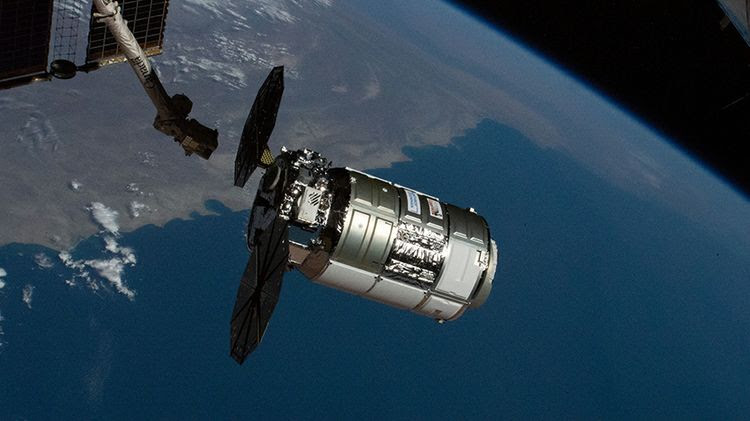The Cygnus spacecraft: Northrop Grumman's cargo ship

The Cygnus spacecraft is an uncrewed cargo ship that brings supplies and equipment to the International Space Station (ISS) and then takes refuse away. It is operated by Northrop Grumman Space Systems, a private American aerospace and defense technology company. The vehicle is named after the Cygnus constellation that is visible in the northern night sky.
Spacecraft design and operation
The Cygnus spacecraft, which was developed by Orbital Sciences Corp. and Thales Alenia Space, consists of a silver pressurized cylinder that's 17 feet (5 meters) long and powered by two solar panels that stick out like wings from its sides. The original version of Cygnus could carry up to 4,409 lbs. (2,000 kilograms) of material to the ISS, Space.com previously reported, though more recent models have a cargo capacity of up to 7,716 lbs. (3,500 kg).
A typical Cygnus mission launches using an Antares rocket from a NASA launchpad, zooming up to an altitude of 250 miles (400 kilometers), where the ISS orbits. The vehicle uses GPS and star trackers to autonomously navigate closer to the station, before being captured by the outpost's robotic Canadarm2, which is controlled by astronauts on the ISS, according to the European Space Agency.
Once the spacecraft docks with the ISS, crewmembers open Cygnus' hatch and pull equipment from the spacecraft. Over the course of a 30-day mission, Cygnus is filled with refuse, and then closed up again and detached from the station. It can fit several tons of trash and discarded items, according to NASA.
When its resupply and waste collection mission ends, the Cygnus spacecraft burns up in Earth's atmosphere over unpopulated areas of the Pacific Ocean.
How Cygnus got started
The development of Cygnus began in 2008, when NASA awarded Orbital Sciences Corp., a Virginia-based private aerospace company, a $1.9 billion contract under the agency's Commercial Orbital Transportation Services Program, Space.com previously reported. The spacecraft was designed to bring material to the ISS following the retirement of NASA's space shuttle program, which officially ended in 2011.
Orbital launched its first Cygnus spacecraft in 2013 from NASA's Wallops Flight Facility in Virginia atop an Antares rocket, also built by Orbital. On Sept. 29 of that year, the vehicle made its debut delivery, coming close enough to the station to be captured by the robotic arm and then docked to the outpost's Harmony module.
Breaking space news, the latest updates on rocket launches, skywatching events and more!
Related: Private Cygnus spacecraft makes historic 1st rendezvous with space station
In 2018, Northrop Grumman acquired Orbital for $7.8 billion, assuming ownership of Cygnus as well as its launch vehicle, Antares.
What Cygnus has accomplished so far
Since its first launch, the Cygnus cargo ship has carried more than 70,000 lbs. (31,500 kg) of necessary equipment to the station, according to Northrop Grumman. Over the years, Cygnus has demonstrated many capabilities beyond being a resupply vehicle, including launching cubesats, acting as an extra lab space while docked to the ISS, boosting the station's orbit and flying on its own for more than a year.
In 2021, a Cygnus spacecraft was named in honor of Katherine Johnson, a NASA mathematician and "hidden figure" who helped make calculations for the Apollo 11 mission. The mission carried an advanced supercomputer, an artificial retina experiment and worms that would be used in a muscle strength test experiment.
Related: Cygnus cargo ship honoring 'Hidden Figure' Katherine Johnson arrives at space station
Other recent Cygnus missions have brought 5G technology experiments, a delivery of cheese and candy for astronauts and a $23 million titanium space toilet to the ISS.
Additional resources
- Read more about Northrop Grumman resupply missions on NASA's website.
- Watch the launch and docking of Cygnus in this video from Orbital Sciences.
- Track the latest updates about Cygnus on NASA's blog.

Adam Mann is a journalist specializing in astronomy and physics stories. His work has appeared in the New York Times, New Yorker, Wall Street Journal, Wired, Nature, Science, and many other places. He lives in Oakland, California, where he enjoys riding his bike. Follow him on Twitter @adamspacemann or visit his website at https://www.adamspacemann.com/.
